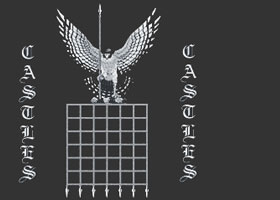Medieval Musical Instruments - Percussion Category
There were many Percussion Medieval Musical Instruments : - The Drum - Drums were made initially from a hollow tree trunk, clay or metal and covered by skins of water animals - also called tambours
- The Cymbal - Thin round concave metal plates
- The Triangle - Instrument Introduced in the 14th century
- The Tambourine - Musical instrument traditionally used by a woman
Medieval Musicians
There were two types of Medieval Musicians - the Minstrels and the Troubadours. - Troubadours - A troubadour was a travelling musician. The Troubadours travelled from one village to the next and many also travelled abroad. The troubadours therefore served a dual purpose and spread the latest news across the realm. The themes of the songs sung by the Troubadours mainly dealt with chivalry and courtly love - romantic ballads. The troubadour would play for common people and nobles.
- Minstrels - A minstrel was a servant first employed as a castle or court musician. The name 'minstrel' means a "little servant". Minstrels often created their own ballads but they were also famous for memorising long poems based on myths and legends which were called 'chansons de geste'. The themes of the songs sung by the Troubadors also dealt with chivalry and courtly love but they also told stories of far lands and historical events. The Minstrels were replaced by Troubadours and also started to move around and were known as 'Wandering Minstrels'
Medieval Music
Early Medieval music was first performed in unison. The notes were usually the same length and song, or played, in the Key of C. Harmony was gradually introduced and by the 12th century a method of music notation developed which indicated the length of each note and the pitch. Medieval Musical Instruments
The descriptions of Medieval Musical instruments provide valuable facts and information about musical entertainment in the Middle Ages. | 
